RFDS: Australia ambulance with SLA at 1 hour to anywhere in the continent
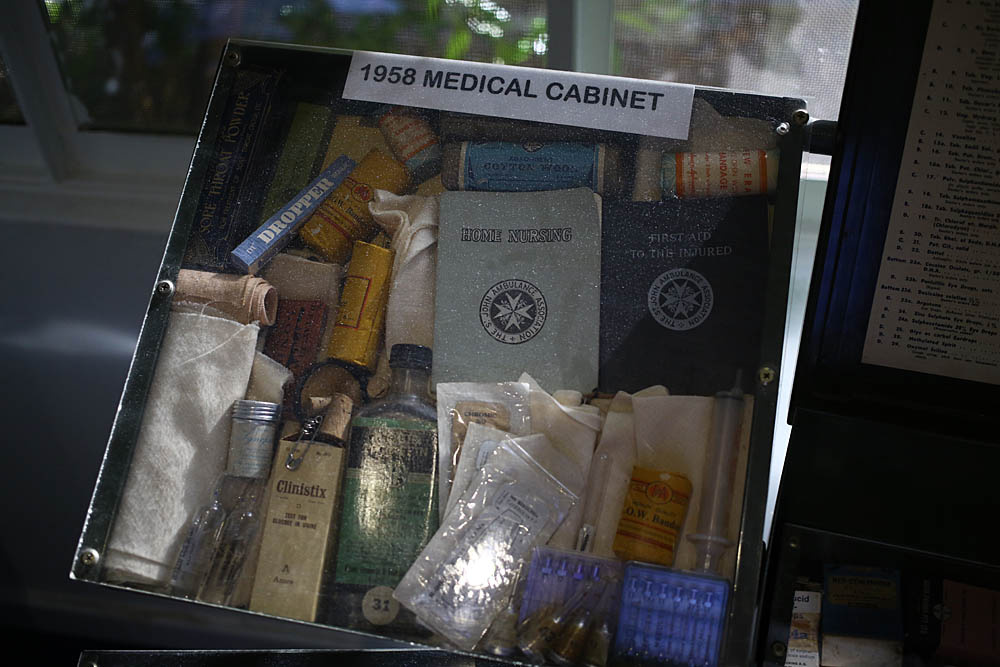
Imagine for a start that you live in a paradise on the edge of the earth, and there are no people around for 500 kilometers. It is beautiful in all situations except for the one when you were bitten by a snake, and you have 2 hours left to live if you move. Or about 20-25 hours, if you lie in the shade and let foam and drool in the grass.
You can carry the vaccine with you, right? Yes. Together with the fridge. This increases your chances of surviving a snake bite by up to 20%. The fact is that there are five vaccines. And the introduction of the wrong one is guaranteed to kill you in 15 minutes. It is necessary either to hold in your hands that snake that bit you and carefully examine it, reading the instructions (and most of the bites feel like a grass stab, and sometimes the victims do not even know what it was until they start to feel dizzy) - well, or have it at hand field laboratory for rapid analyzes. And even if you suddenly learn about selective color blindness in the twentieth year of life, you will not be happy for long. And these are only snakes, because there are still a lot of ordinary everyday things from stuck appendicitis to heart problems.
And the state is very interested in the development of farms. And at this moment RFDS appears on the scene. Royal service of flying doctors. Medical Special Forces of Australia.
Starting conditions
A very abbreviated colonization history looks like this: at first, the continent was supposed to, even sent expeditions to search, but past it epically missed several times. As a result, he was found by Captain Cook (who was eaten in Hawaii decades later). And I found it for a very interesting reason - then Venus passed through the disk of the Sun, plus accurate chronometers appeared. This allowed us to fine-tune the coordinate grid.
After half a century, England realized that storing the criminals on barges in the middle of the Thames was an idea so-so, and sent a fleet of prisoners and escorts to found Sydney. For the first couple of years, the new population knew the joys of life - nifiga from sowing does not grow, many snakes, crocodiles, spiders - well, in general, this is all that is usually told about Australia. After almost two years, the beets rose, and then it started. The correct form of farming was quickly established - beef cattle. You take a land plot of about 100 kilometers for 200 kilometers, enclose it with a fence, make sure that all the crocodiles are gone during the dry season, and you drive bulls there. They are not eaten by dingo dogs (they eat sheep), they don’t care for snakes and spiders, they don’t need a stall. In the summer in Australia, say, plus 25, in the winter - plus 24. Then you update the fence from time to time so that the cattle do not run up and the crocodiles do not crawl, and two years later you collect bulls and slaughter them for meat. There were many problems, but the most obvious one is that you need to have huge farms for such animal husbandry. For you to understand, a large farm can be 250 by 400 kilometers. This is almost Switzerland, for a moment. And this means that already somewhere the third layer of farms from the city is an opportunity to meet another person once a year or two.
Therefore, as a first aid kit it was worth wearing a revolver with a cartridge. In order not to suffer, if that.
Radio
Dr. John Flynn thought a great deal about how to make it so that instead of “finish him there” you could call a doctor. Just at this moment in the First World War actively developed radio communications. Let me remind you of the situation - there is no electricity supply, steam engines are used in production, there is a telegraph. It would have been very expensive to build a telegraph, but the radios decided all the troubles. A doctor with engineers was able to come up with and pick up a model of a walkie-talkie with a dynamo - a cross between a signalman's console and a bicycle. You pedal - and for that you have a working radio.
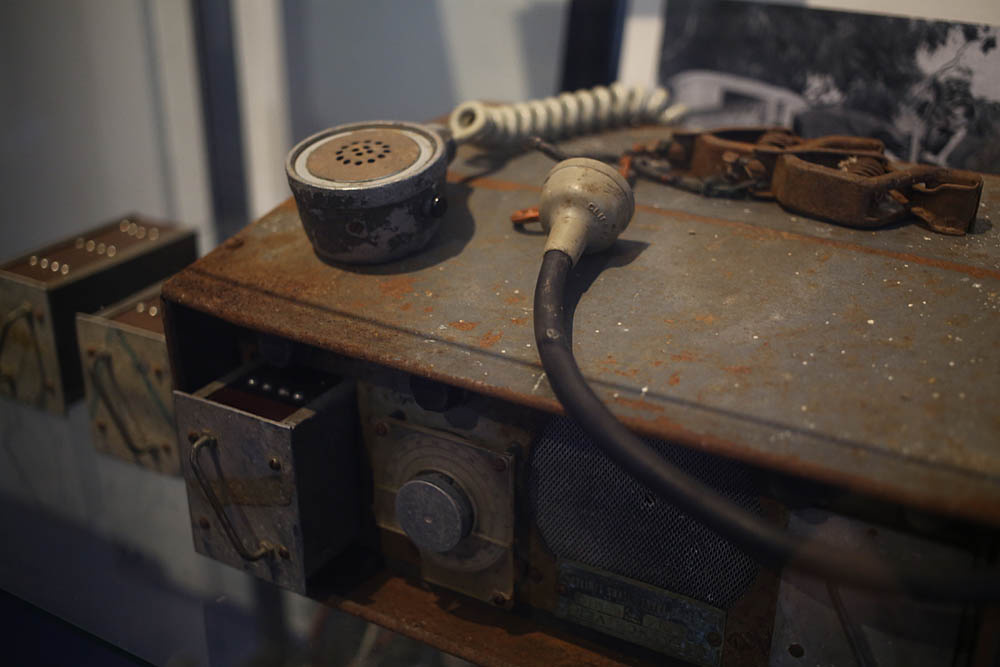
A petition was filed with the government, and the government financed the mass production of one model with a “bicycle” and a microphone, the cheapest, but no-fail. After 10 years, farmers had the opportunity to talk about business in the evening. Previously, they went to bed, as it grew dark, or did something by the light of a kerosene lamp. And now they sat on a bicycle and listened to the world for many hundreds of kilometers around. Then medical consultations were given on the radio, and this was already to some extent a breakthrough. By the way, at the same time distance education began in schools (until now even the Alice Springs radio school for Aboriginal people works, only now in 4G).
Aircraft
A little later, two pilots decided that digging up the land was somehow stupid, and something that would become the modern airline Kvontas (like our Aeroflot) appeared. At first they just drove people faster than the stagecoach. The slogan was “Half an hour to go home for the price of a stage.” Luggage horses, and people - on the plane.
Dr. John Flynn came to them. And asked if it was possible to carry the sick. And they began to slowly drag people to hospitals. A little later, they began to make a special cradle on the wing for those who cannot sit in the narrow cockpit for the pilot. Again, everything counted and went to the government. The government nodded, bought the aircraft. So there was an aviation fleet, which was engaged only in medicine.

This was the beginning of the RFDS. Today, the flying doctor has 10 airfields and 68 airplanes in the permanent fleet. In the very center of Australia in Alice Springs (100 kilometers north of the geometric center of the continent) there is a hospital for RFDS, and everyone is brought there. Another hospital on the coast - those who are under organ transplant or a complicated operation are being brought there.
In time free from urgent calls, doctors do two important things. First, they go on a patrol to form routes, where from any point with farmers a maximum of half an hour (depending on the region) is flying. That is, the fleet is constantly in action, and not at the airfields, and somewhere near you there is always a plane and a doctor. Secondly, they are engaged in prevention. Landing during these patrols in the Aboriginal villages, small towns, on farms - take tests, inspect all. If a wake-up call arrives, they give up prevention and fly to save.
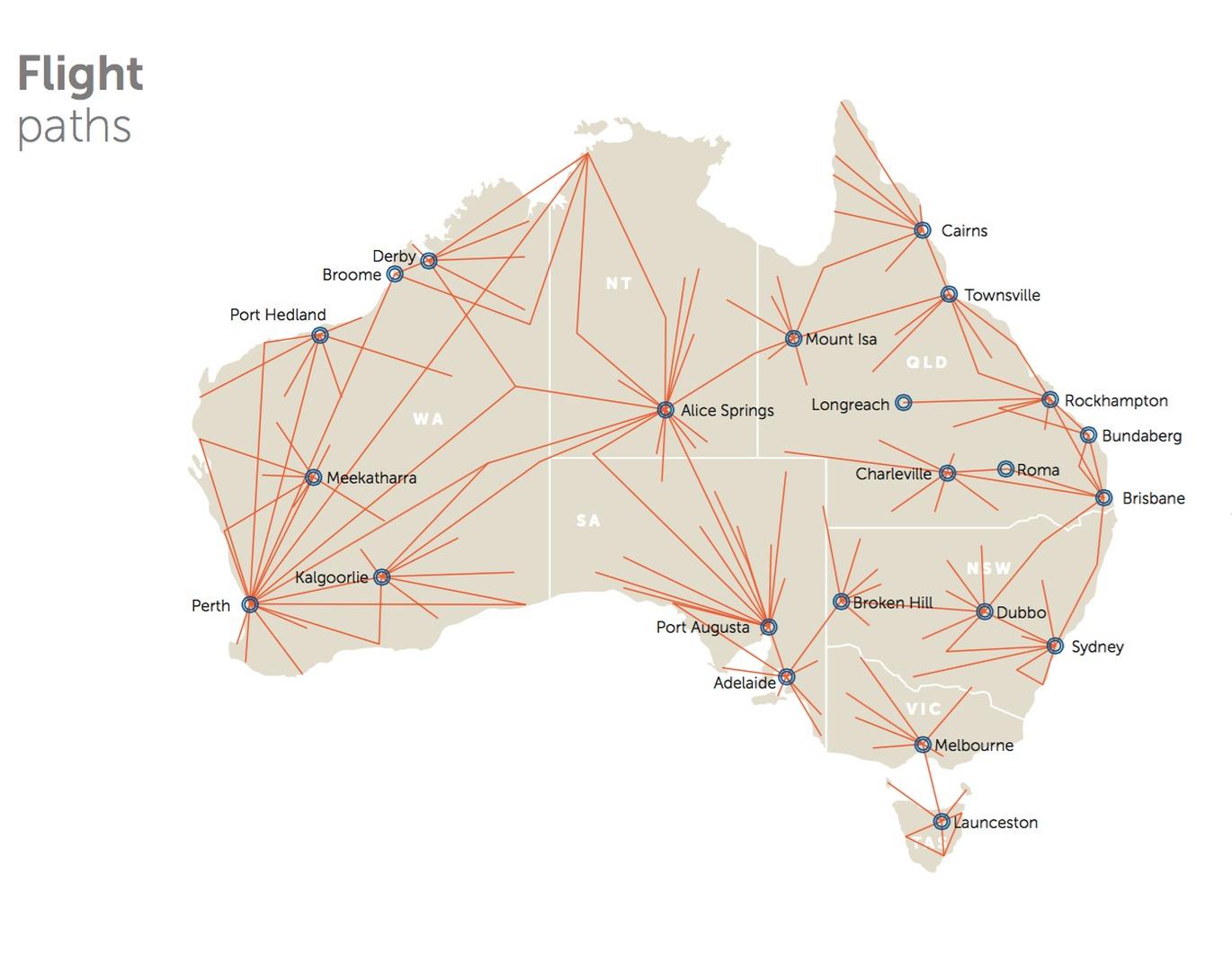
Source of The first aircraft were de Havilland DH.50 (single engine biplanes, 180 kilometers per hour). More modern models for serious cases - for example, Pilatus PC-12 .
Every large Australian farm is required to have a runway for RFDS light aircraft, and this strip must be maintained in excellent condition. Sometimes farmers with helicopters take the patient to the road on which the RFDS plane is landing - in this situation, the doctor of VHF radio informs everyone below that he needs a road. One car blocks the road at the beginning of an improvised runway, the second at the end. The plane lands, takes the patient and goes to the hospital for 1000-2000 kilometers.
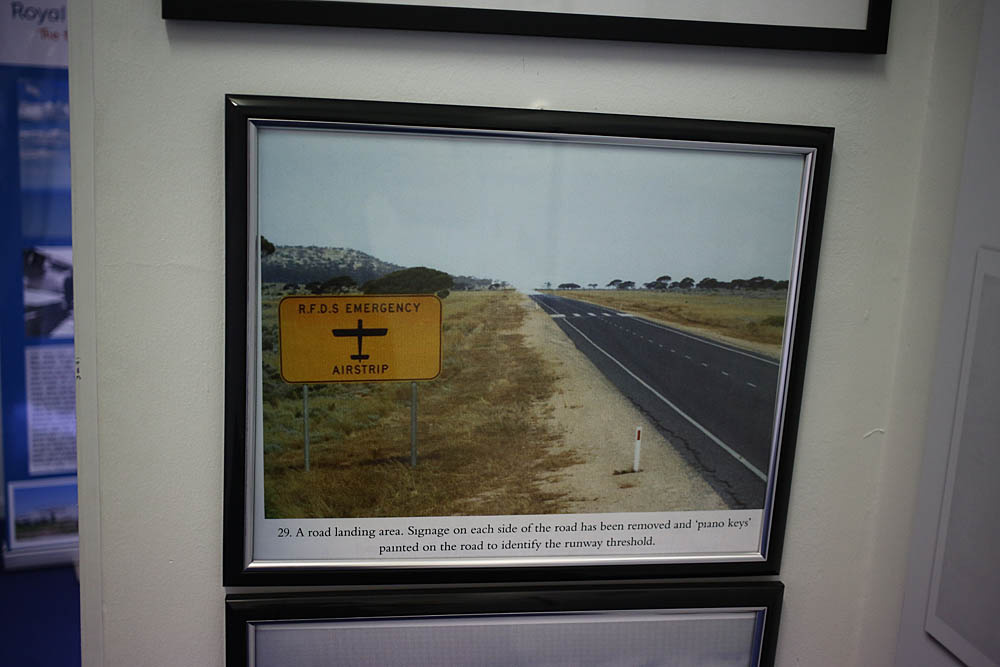
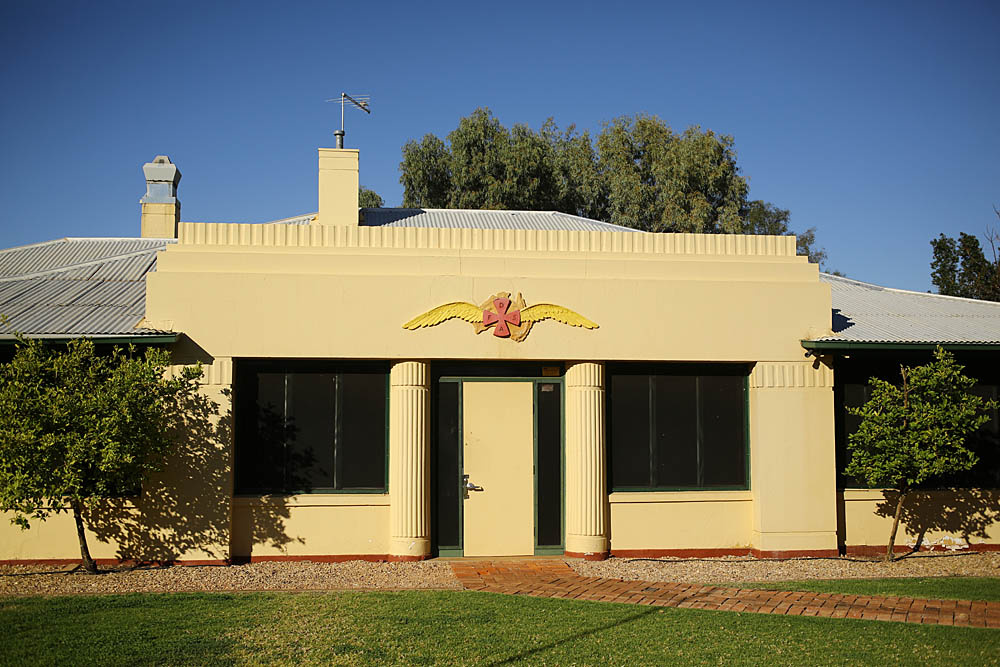
Central office in alice and old emblem
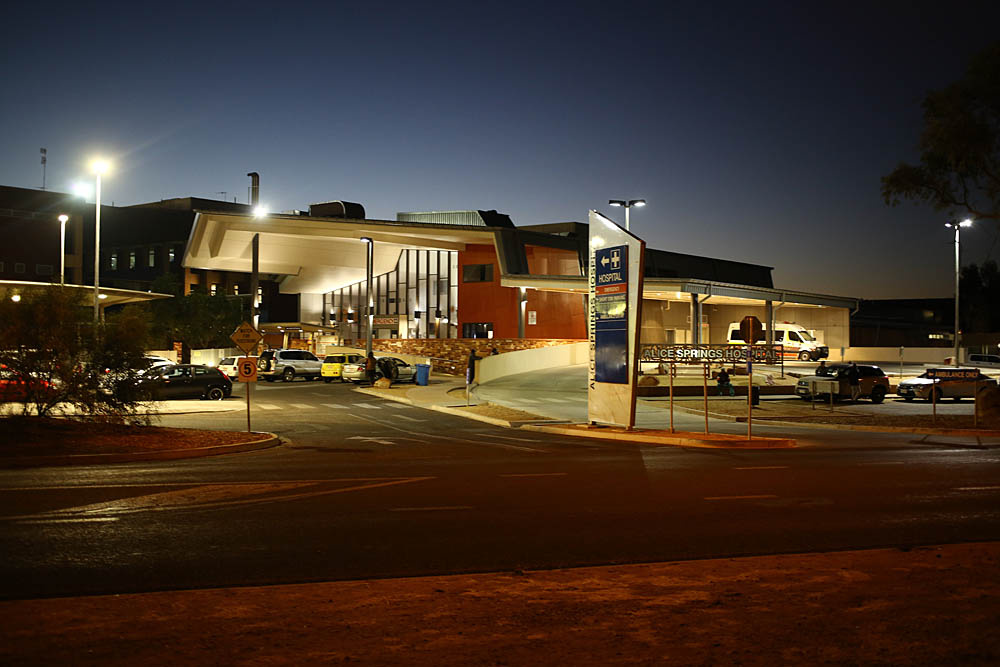
Alice Hospital
In the plane itself is equipped with a field operating room. After several years of practice in RFDS, any doctor becomes a welcome guest in any city. Imagine: since you don’t have a hospital behind you, there’s no help waiting. Ambulance in cities stabilizes and takes to the operating room. The flying doctor may not always like this - he needs to act on the spot himself. Recruited the wildest experience and ability to make decisions. In recent years, satellite communications have been installed on airplanes, and the service has contacts with all leading Australian specialists. Toxicology professor at the University of Sydney can be called during a lecture - he can bring a call directly to the board and advise the flying doctor on the video. And then continue to teach students stunned by the romance of no man’s land.
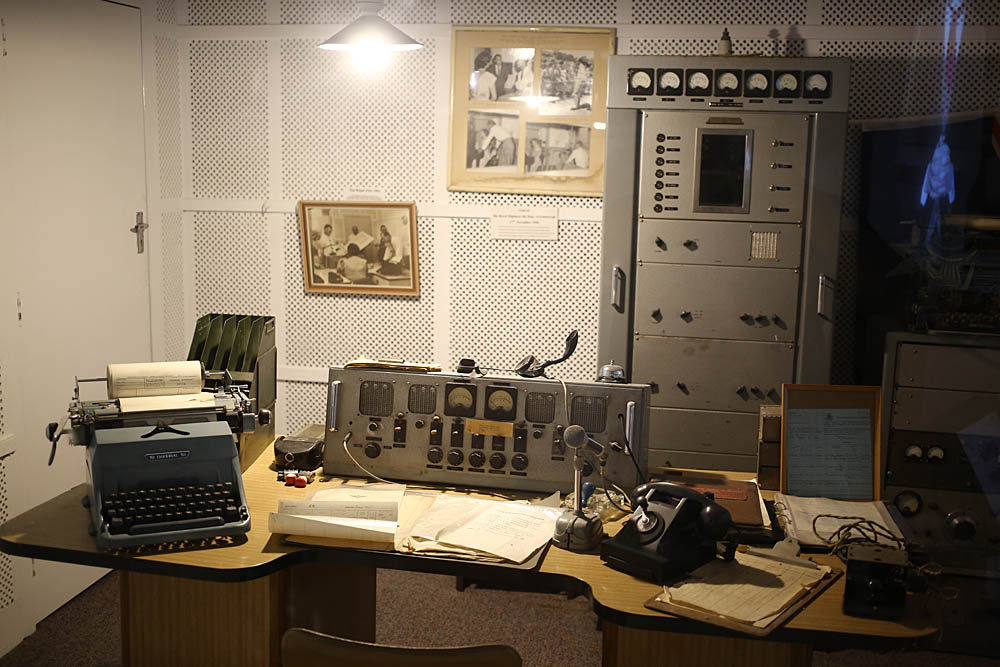
At the central office, they carefully enclosed and sealed the first control room. It turned out a mini-museum.
Inside the service, there are six main professions: pilots and engineers for airplanes, paramedics (nurses) and doctors for treatment (by the way, some know vetprofile), communications dispatchers for coordination and assistance right on the radio. Plus, people from the office who are responsible for IT, finance, and so on.
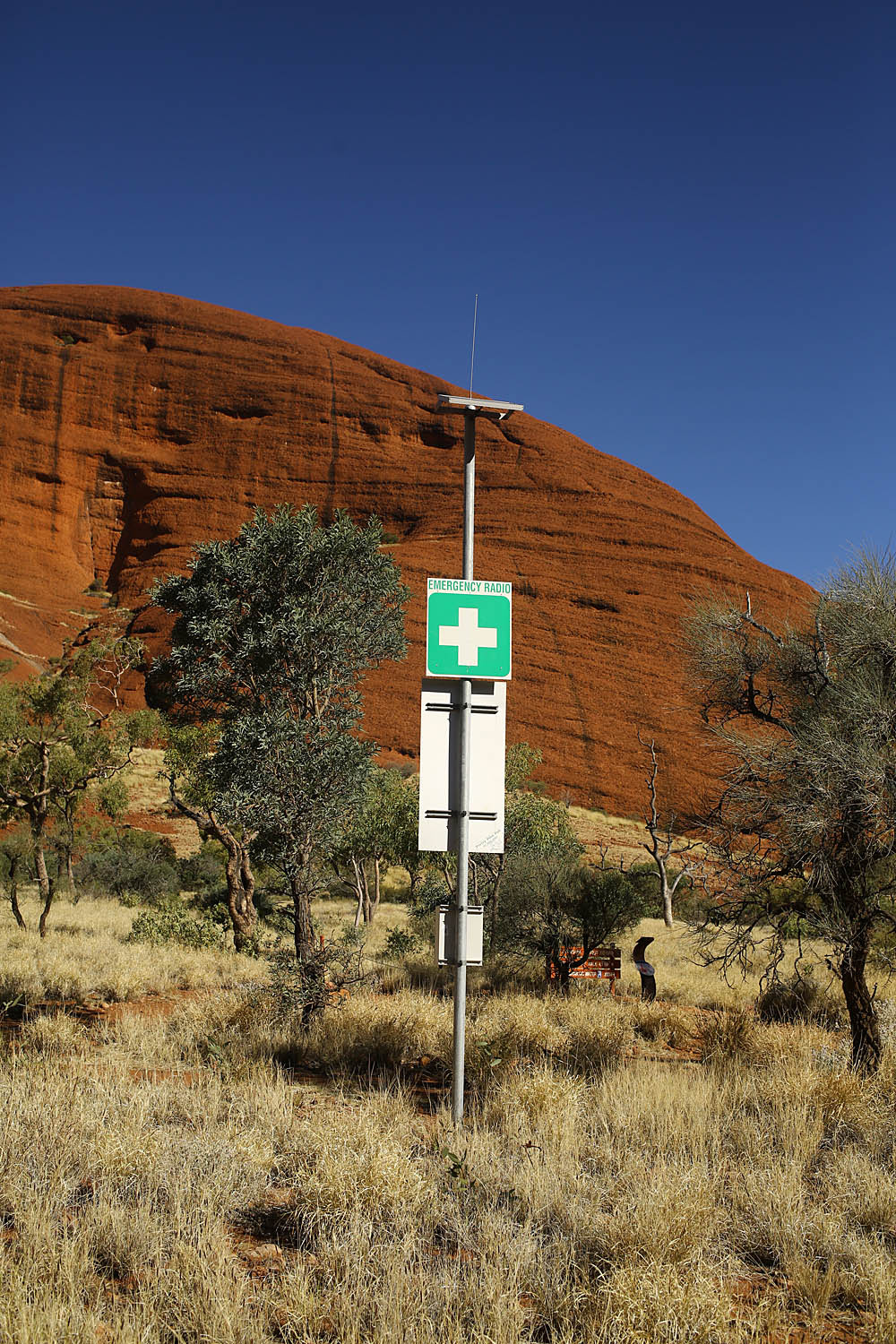
In different places there are such radios to call the medical service. In this particular place in Olgas there is a local call, but somewhere in the wastelands there may be a retransmission of the flying doctors or rangers who will call them. In the cities there is also a spider ambulance on motorcycles, but ionicman can tell a little more about it .
In Australia, there is no tradition of tip in the wastelands of the Northern Territories. But banks are at every gas station, in every bar and in every cafe at the cash desk. This is not a tip, this is RFDS. By the way, if you ask what the letters are, the Australian will never answer the foreigner directly. Say - put two bucks, I will tell. And then he tells.
The state does not give a very large budget for RFDS, but they collect money and send a detailed report to all who donated. From many festivals, part of the entrance tickets goes to RFDS. Many companies give something to a flying doctor - for example, the famous RM Williams sheathes them completely.

They and folklore firmly entered
When I was at their central office, an Australian grandmother just came in with a wad of money in her hand. She said that the flying doctor saved her grandson 8 years ago, and she again made a donation.
All Articles